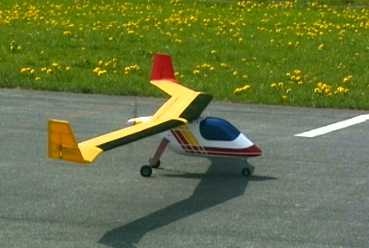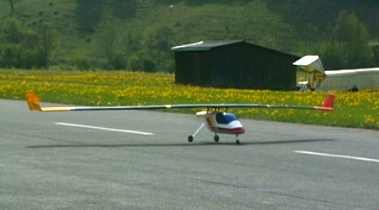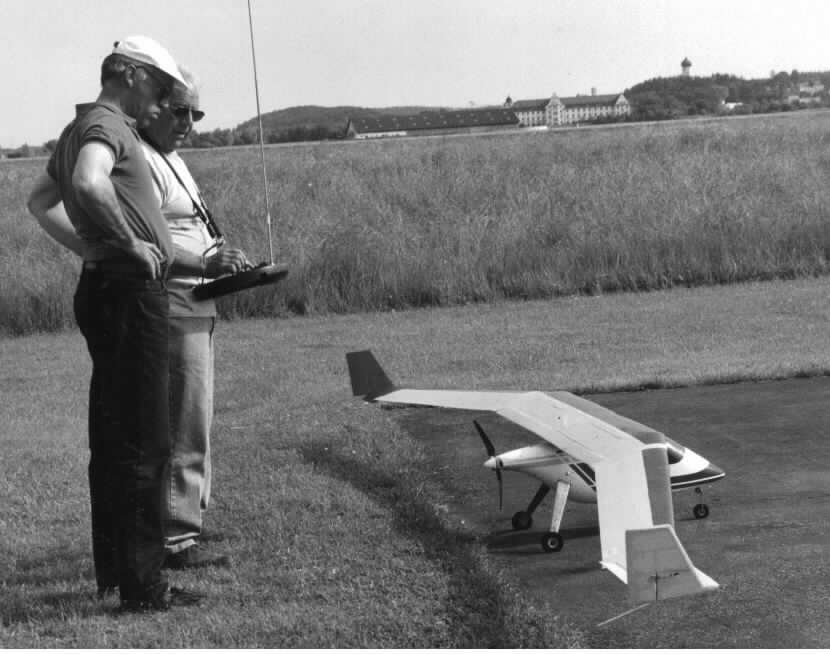|
By Thomaas Bircher NOTE: The section below was sent to TWITT in late 2001 and has since been updated. Click here for the latest update. (ed. - The following text and pictures were provided by Thomas Bircher of Davos-Dorf, Switzerland. This has been an on-going project with this model being the latest iteration of design changes over the years. This a collaboration between Thomas and several other designers and builders.) Flight testing the LEA 23, first results: 1. Roll, Liftoff - On a beautiful evening in May the little airport at the village of "Bad-Ragaz" was made available to us, to have the biggest possible area for a first flight. Everything looked good so we taxied it out to centerline. Taxiing is very simple and smooth with the steerable nosewheel.  ABOVE: LEA23 on takeoff roll. Good view of the wing planform. Accelerating
with the
full power of the 29 cell Nicad 2400 Batteries, LEA took up speed fast,
got un-steerable and broke of into the grass. Pulling on the
stick
did not change anything. Result:
 ABOVE: Another view showing the span and before the wing started achieving lift. First Flight: May 23, 2000 In Thannhausen, Germany there is a very nice model flying club with their own runway(250 feet asphalt). Best place now for the first flight. Results: A - It behaved
as expected.
For take off we had to use a second pilot "at the flaps" because with
full
power and flaps down a great pitch-up moment was expected and nobody
was
sure if it would be possible to counteract with elevator only.
2. Later Problems: A - Structure:
The carbon
fiber joints between the inner and outer wing were too weak in
stiffness,
allowing vibrations off the outer wing panels.
3. Final conclusions: A -
Theoretically: On
Track
Thomas Bircher
|
| ....... |
